Where: London, United Kingdom
When: 6-7 December 2013
How many of you have imagined saying that in one of those red telephone booths in London? Or pretended to do so? I have. I've done both. Well, minus the British accent. I'm still working on that.
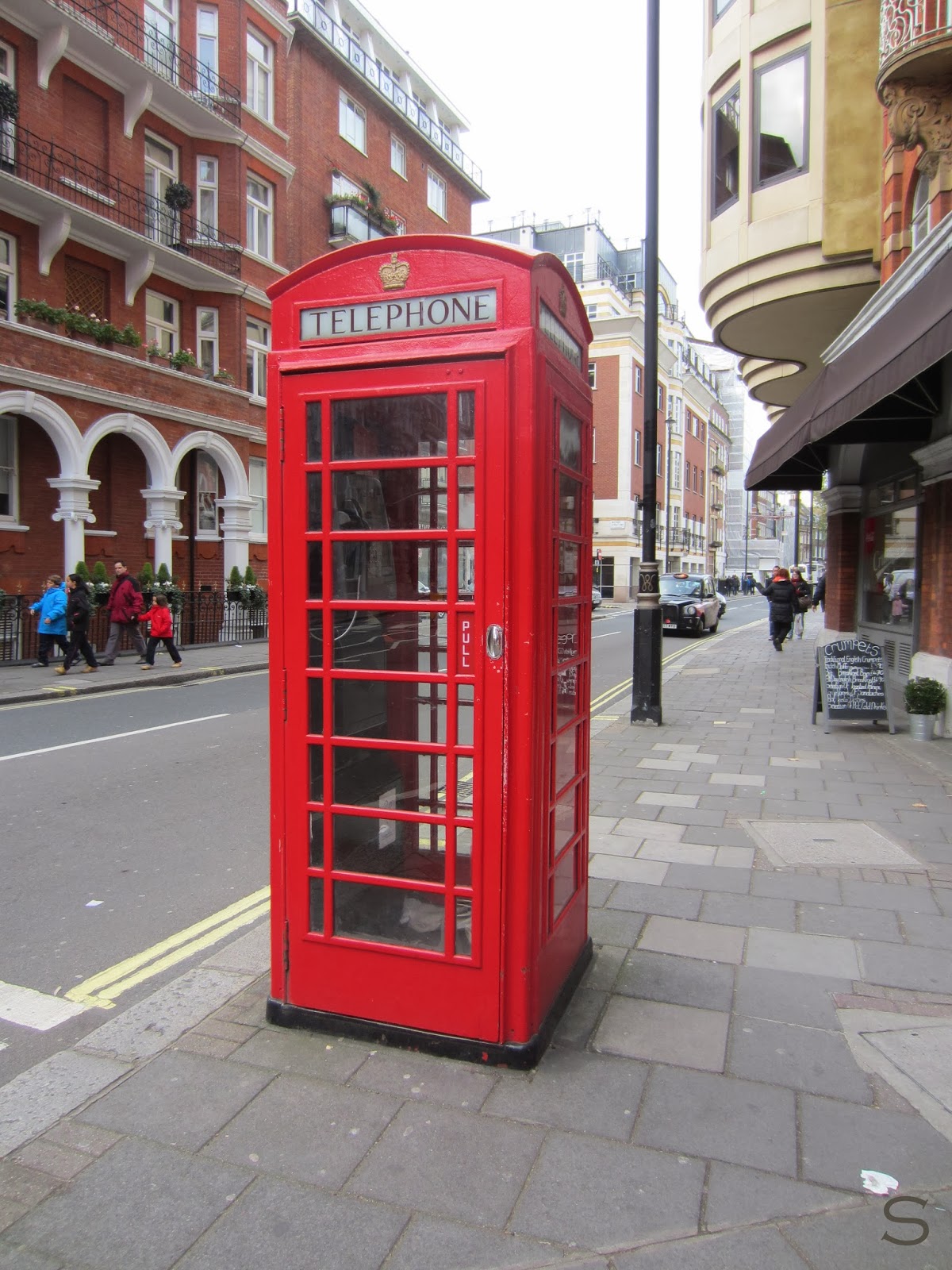 |
| Telephone booth, London |
But London isn't only known for its telephone booths and red double-decker buses, is it?
 |
| Double-decker buses, London |
After getting off our bus from Oxford near Victoria Station,
 |
| Victoria Station |
we headed to our first sight for the day - the Buckingham Palace.
 |
| The Buckingham Palace |
The Buckingham Palace, as you probably know, is the official residence of the Queen. However, she had her hands full that day and she didn't invite us over tea. Oh well, there's always next time.
We were greeted by a marching band.
 |
| At the Buckingham Palace, Victoria Memorial on the right |
If that was the changing of the guards we witnessed (because I'm not entirely sure what it was), we got there right about its end when the marching band exited through the central gates and went on its way. Here's a schedule, so you don't miss it.
 |
| The Buckingham Palace |
The balcony in the middle is where Kate and William had their first (and second) kiss on their wedding day. The wedding that took place at the Westminister Abbey, but we'll get to it.
A great deal of banquets, lunches, dinners, receptions, etc. are held in the Palace. There's plenty of space - a lot of different rooms with different purposes, including the Grand Hall, which is right on the other side of the entrance, with the Grand Staircase and portraits on the walls, dated since Queen Victoria; a Ballroom - the largest multi-purpose room and a Throne Room. The last one is sometimes used for Court gatherings, a second dancing room and on special occasions - the Queen receives loyal addresses.
In the middle of Queen's Gardens, in front of the Buckingham Palace, is the Victoria Memorial, a sculpture dedicated to Queen Victoria (whose 63 years' reign (1837-1901), known as the Victorian era, marks industrial, cultural, political, scientific, and military change within the United Kingdom, and a great expansion of the British Empire).
 |
| Victoria Memorial |
St. James Park leads from the Palace to Horse Guards building. It's the oldest of the Royal Parks of London (one of which is Hyde Park - which has Park Lane and Mayfair as it's boundaries - for those of you, who play Monopoly).
 |
| St. James Park |
The fauna was rich - from chips-stealing gulls and squirrels, sensitive to crunching noises to scarf-eating pelicans and black swans.
 |
| St. James Park |
It was quite the experience getting through that park! (P.S. Cycling is not allowed.) But we made it to the other end (alive and whole) and reached the Horse Guards building.
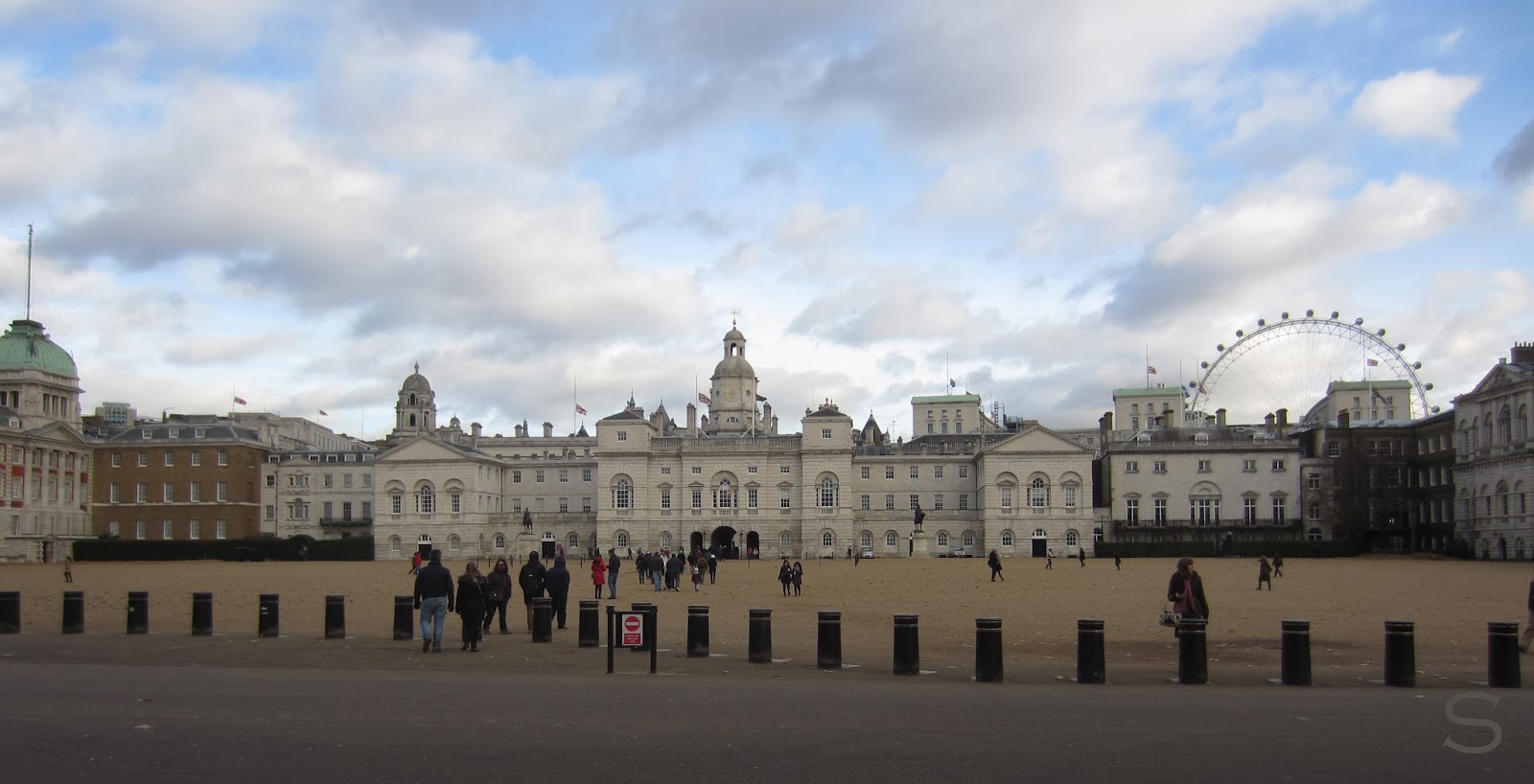 |
| Horse Guards Building |
The building is the headquarters of two major Army commands: the London District British Army and the Household Cavalry, which is the Queen's official bodyguard.
 |
| Horse Guard |
Notice the sign on the right? It says 'Beware: Horses may kick or bite! Thank you'. Keep it in mind when you go near.
Speaking of London police, Scotland Yard is the headquarters of the Metropolitan Police Service, the police force, that polices most of London.
 |
| Metropolitan Police Service |
Trafalgar Square (another Monopoly estate) is a few meters away from Horse Guards.
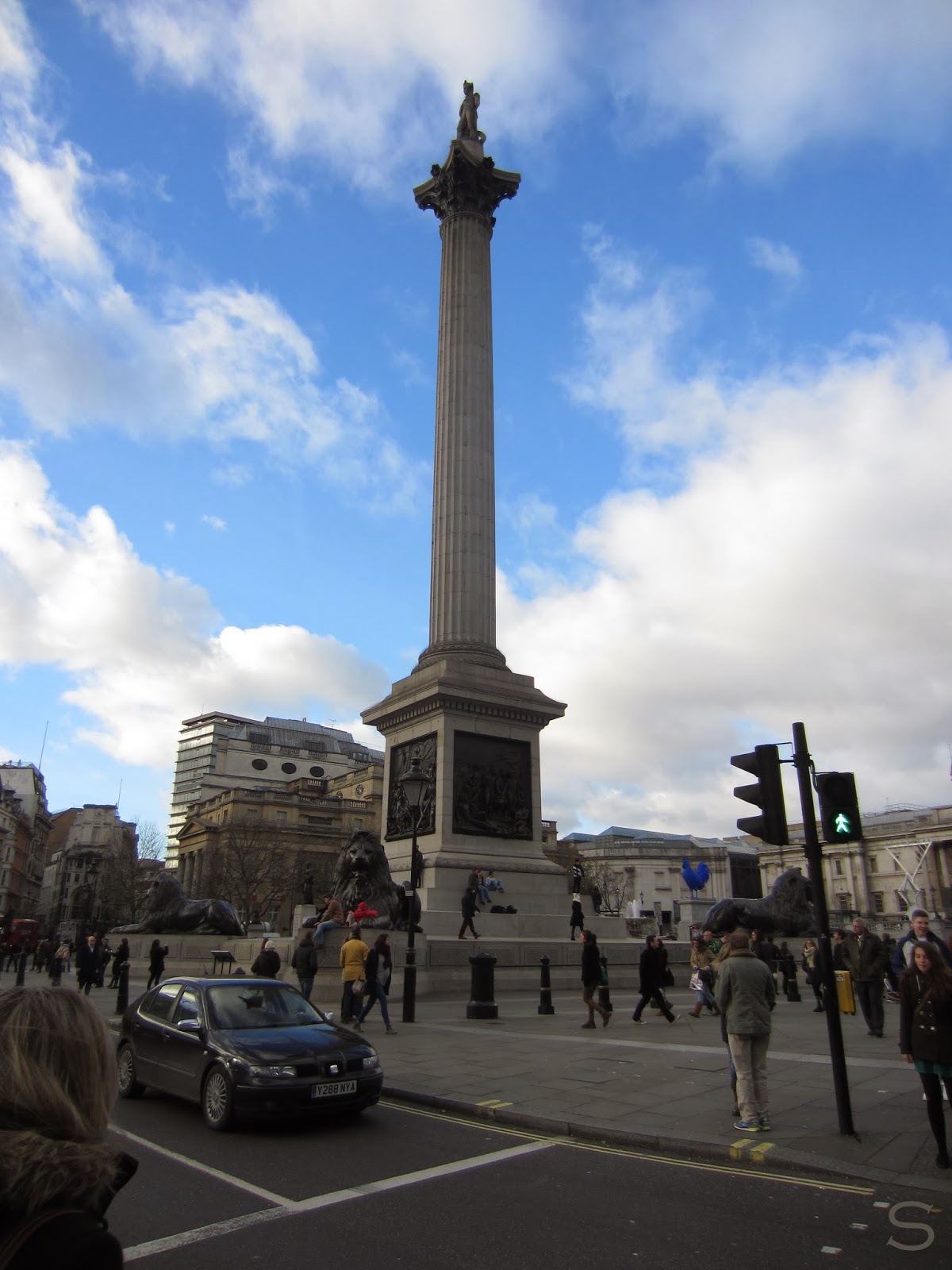 |
| Trafalgar Square, Nelson's Column |
Aside from a tourist site, the square is used for political demonstrations and community gatherings (New Year's eve and more). There are a number of performers, live statues, other statues and sculptures in the square, and one podium, which was left empty. It's a place for different contemporary art. A blue rooster was standing on top when we were there.
In the center, guarded by four lions at its base is Nelson's Column - a monument in memory of Admiral Horatio Nelson, who died at the Battle of Trafalgar in 1805.
An interesting fact is that Trafalgar Square is owned by the Queen in Right of the Crown, while the roads around it are owned by the Westminster City Council.
You've heard of the famous black London taxis, with doors that open in the opposite direction, right? Well, I saw something better.
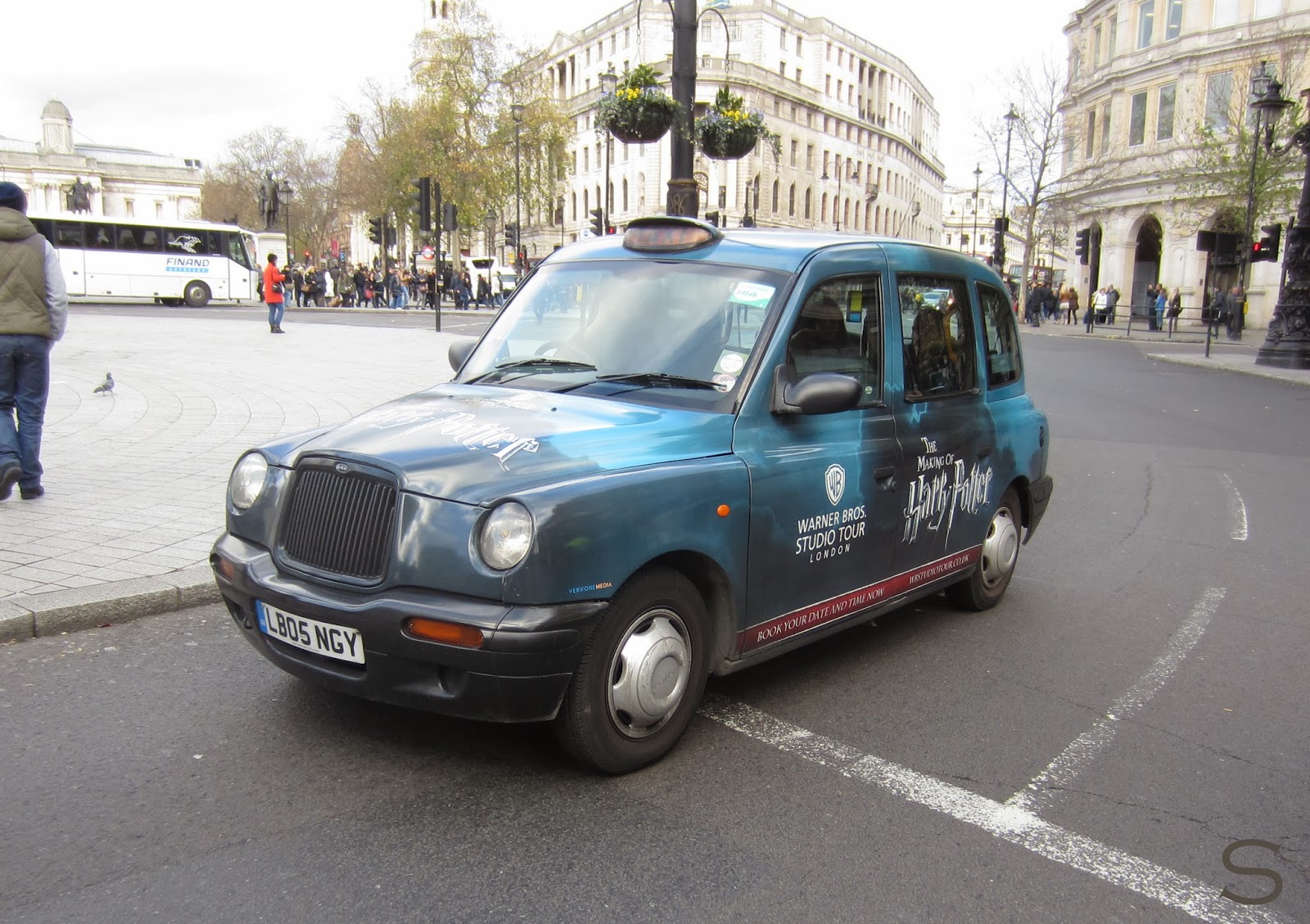 |
| Harry Potter Taxi |
A Harry Potter taxi! If you haven't picked that up from my previous post - I'm a fan.
We didn't take a Harry Potter taxi to our next stop, but the underground (or tube, as it's known in London).
 |
| London Undergound |
I bet you've seen the red disk with the blue bar across the middle of it somewhere. It's one of the most recognized signs around London. I saw more T-shirts and souvenirs of the London Underground than Big Ben's.
Also don't forget to Mind the Gap!
 |
| Mind the Gap, London Underground |
London Underground is the world's first electric underground railway. It has eleven lines and it's really not that complicated when you get the hang of it (and stop laughing at Cockfosters station). It's divided in zones, which matters for the type of ticket you get. Most of the popular tourist sights are in zone 1. You can buy your ticket from machines in the stations. If you're going to be using it a lot, which you probably are, consider getting a day travelcard. We got it for £7.30 but check here for the current rates.
If you're only visiting for a short while, then it's probably too much trouble to get an Oyster card but if you're going to be staying longer, using one instead of paper tickets is a convenient (and cheaper) way to get around the city. Here's more about it.
Speaking of getting around the city, it's hardly a surprise that people in UK drive on the left side of the road. But be careful when you cross the streets. It's confusing if you come from a country with an opposite driving. Although, if you forget, there's always a reminder of which way to look:
 |
| Look Right, London |
Back to our trip. We got off at Embankment station, where an Eye was revealed before our eyes.
 |
| London Eye |
Of course I mean the London Eye - the giant Ferris wheel on river Thames' bank, which offered the highest viewing point (135 metres up in the sky) before The Shard was built. We didn't get on, because according to a friend, it moves very slowly and a round takes quite a while and during that time you're standing, crammed with a bunch of people in the passenger capsule. Not to discourage you or anything but that's what we heard.
Also see the clouds? It didn't rain once while we were in London! How lucky were we?
The sight I was anticipating to see the most was in walking distance. Big Ben.
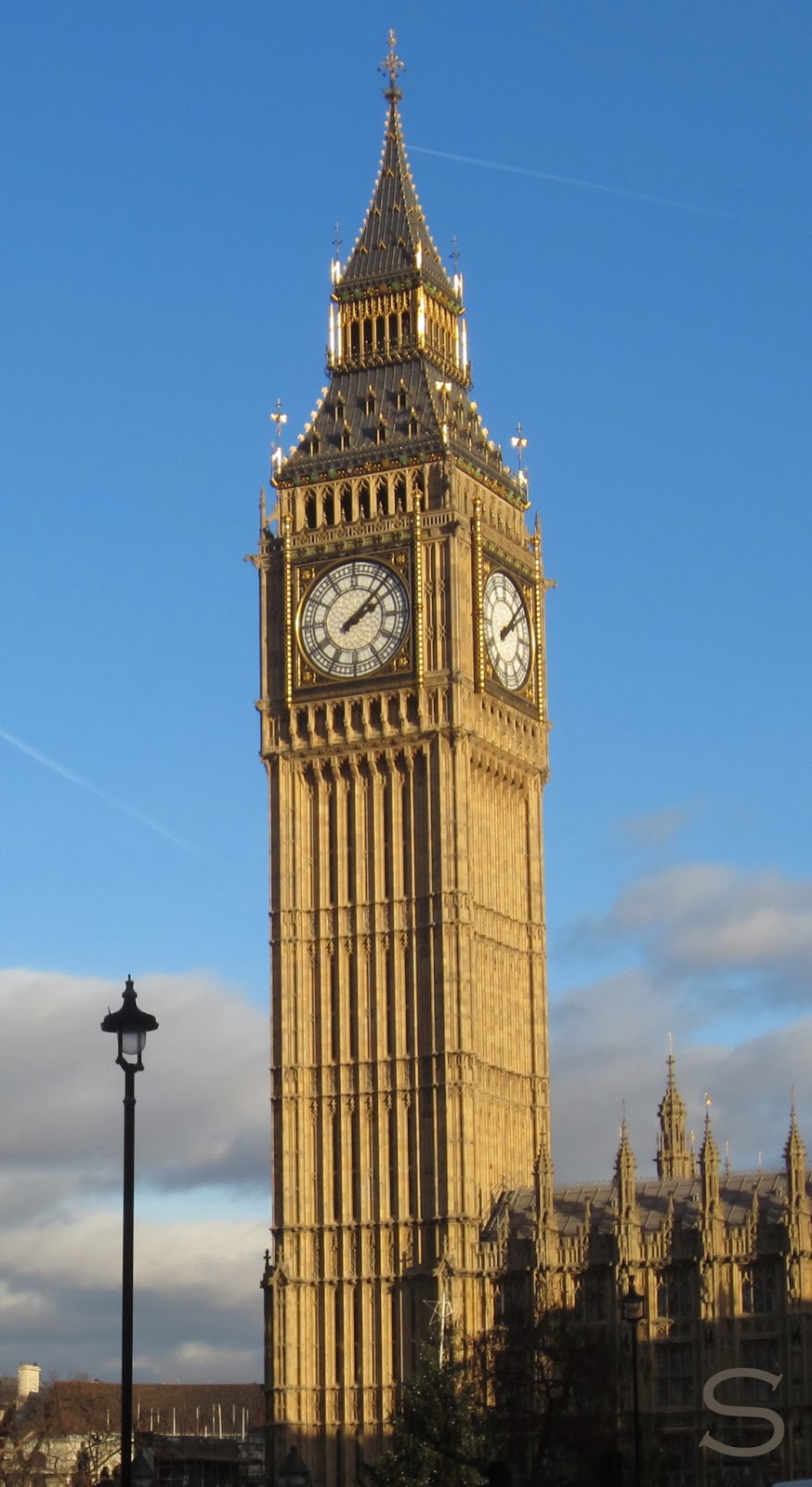 |
| Big Ben |
Did you know Big Ben is the nickname of the bell of the clock in the
tower and not the whole tower? I didn't. The tower, formerly known as Clock Tower is now called
Elizabeth Tower, renamed in 2012 in the name of the Queen. I still call it Big Ben. The clock is the largest four-faced chiming clock in the world.
 |
| Palace of Westminister, Big Ben |
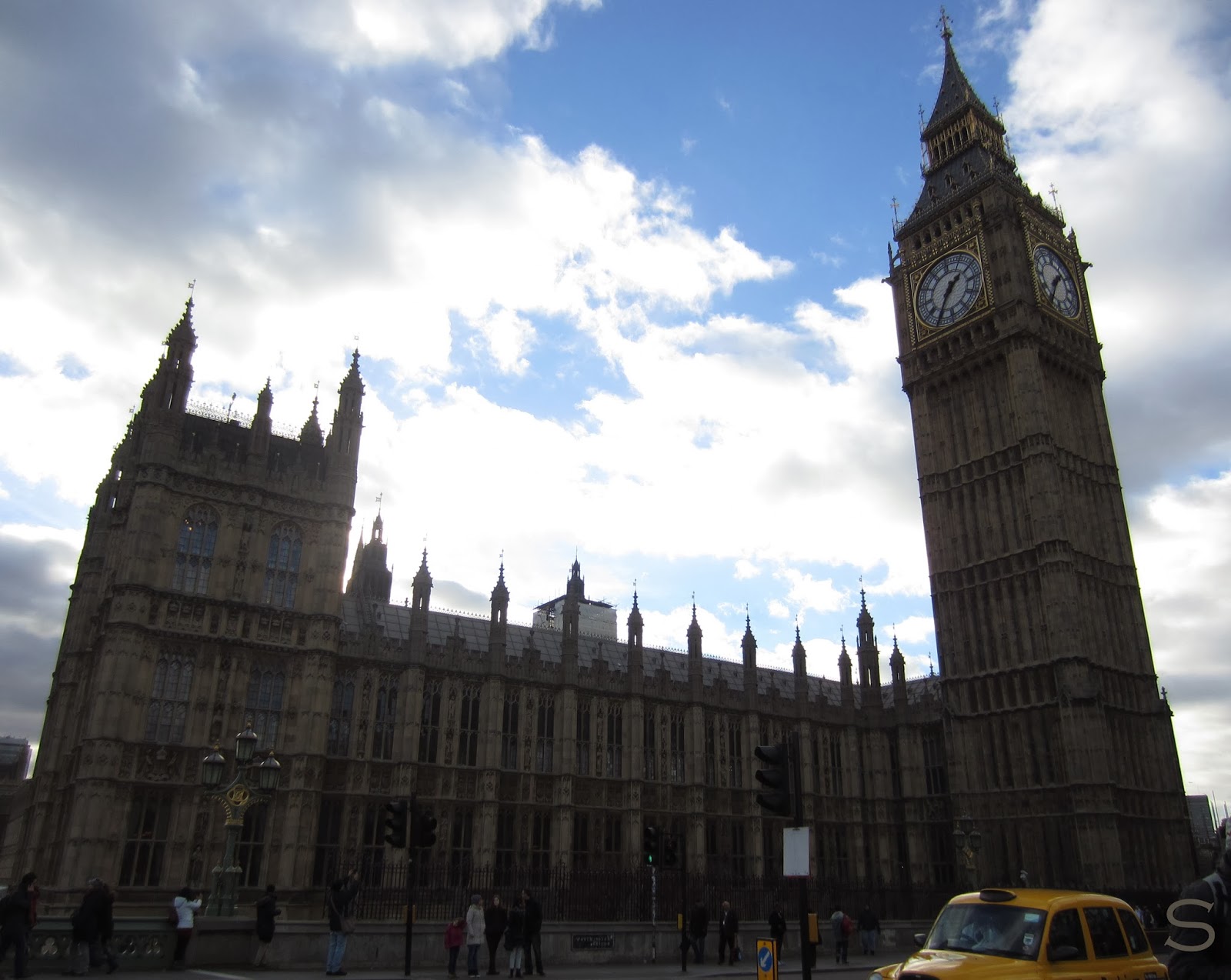 |
| Palace of Westminister, view from Westminister Bridge |
The Palace of Westminister is also known as the House of Parliament, where the two houses of the Parliament have their meetings.
Next to the House of Parliament is the Westminister Abbey. The same one I mentioned earlier, where William and Kate (and I suppose all royal couples) got married.
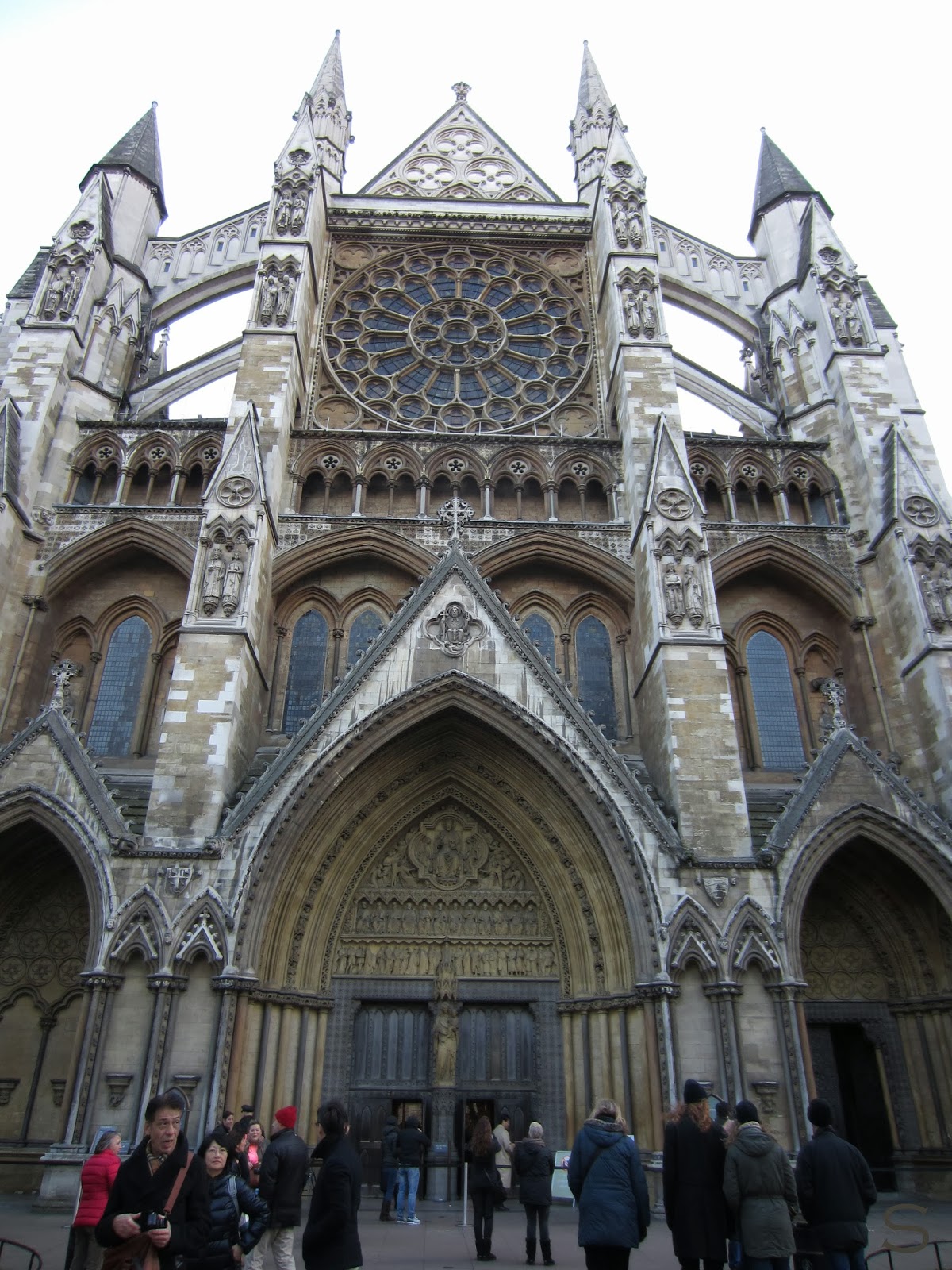 |
| Westminister Abbey |
The cathedral is also a place for coronations and burials of British monarchs.
The Natural History Museum followed next.
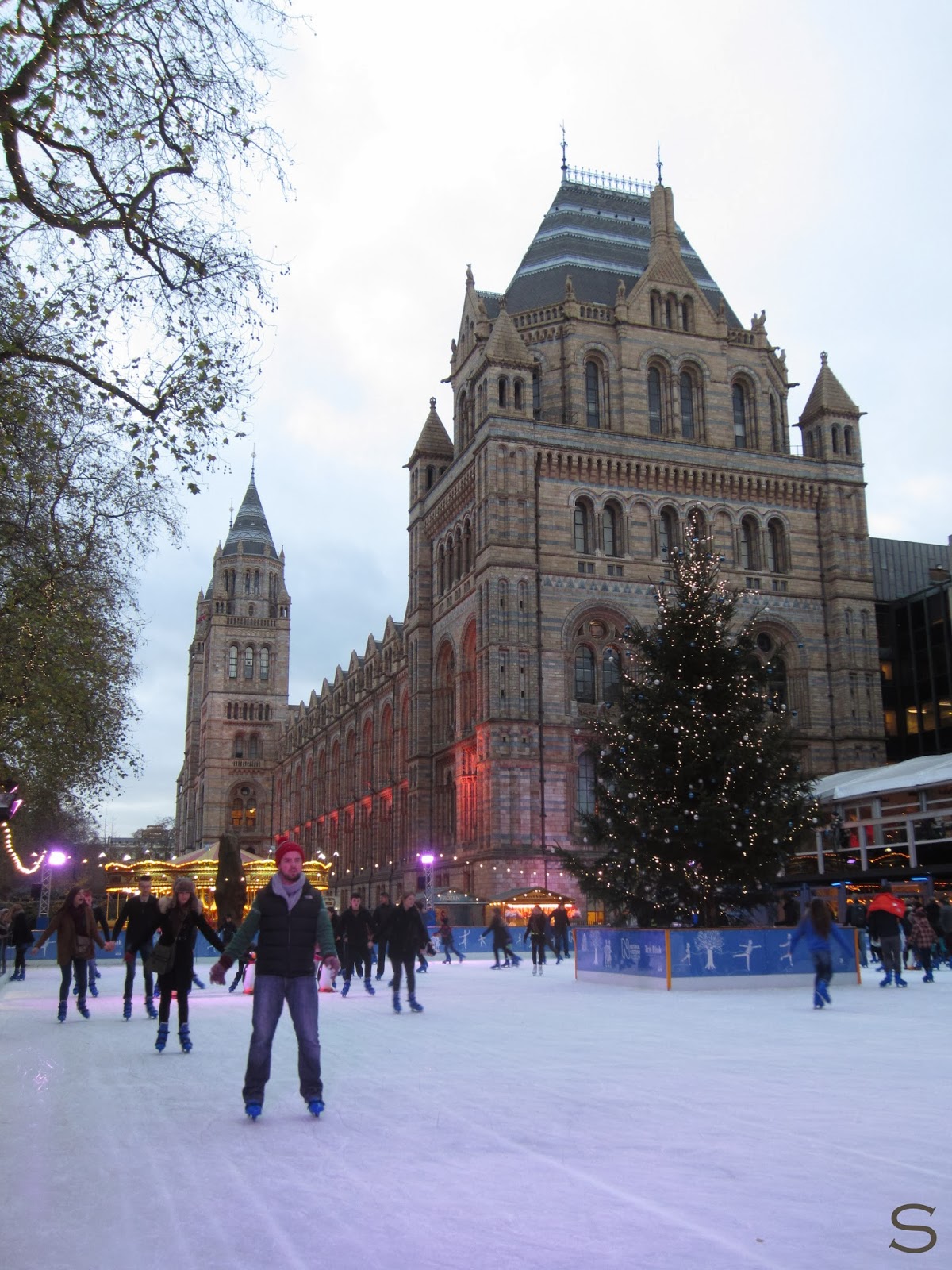 |
| National History Museum |
I wanted to get on that ice-rink but my friends thought going inside the museum was a better idea. They weren't wrong. The museum has a vast range of specimens of the natural history variety. Most impressive was the dinosaur skeletons collection.
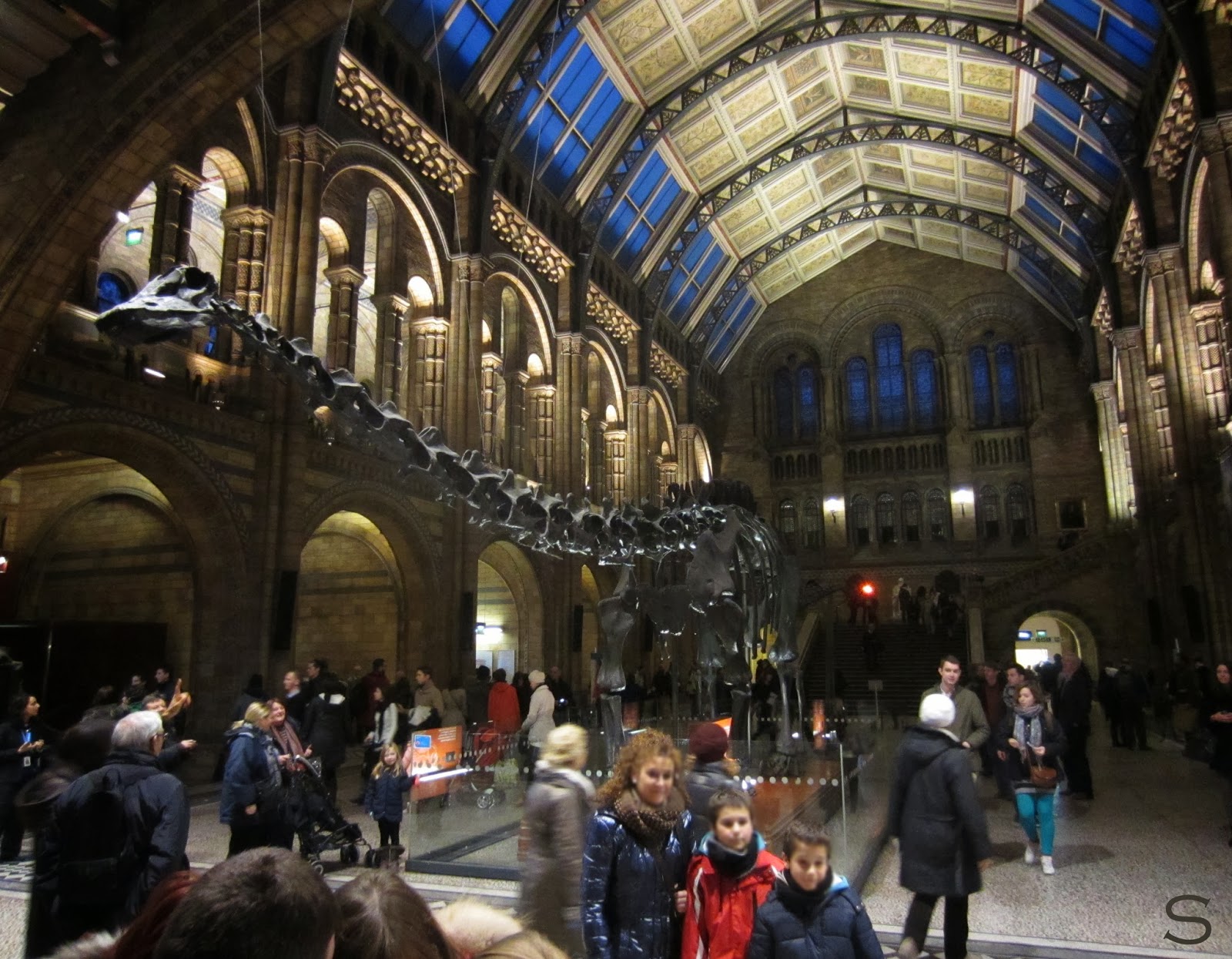 |
| National History Museum |
Also, there's a room that's an earthquake simulator, but it was closed for renovation (no joke) at the time.
The museum has no entrance fee. In fact, most of the museums in London have free entrance or require a donation the amount of which is of your preference.
As for other sights, you'll probably get a better deal if you book them in advance. There are also passes that combine a few sights, which could be useful. I can't recommend any though, since I haven't used any.
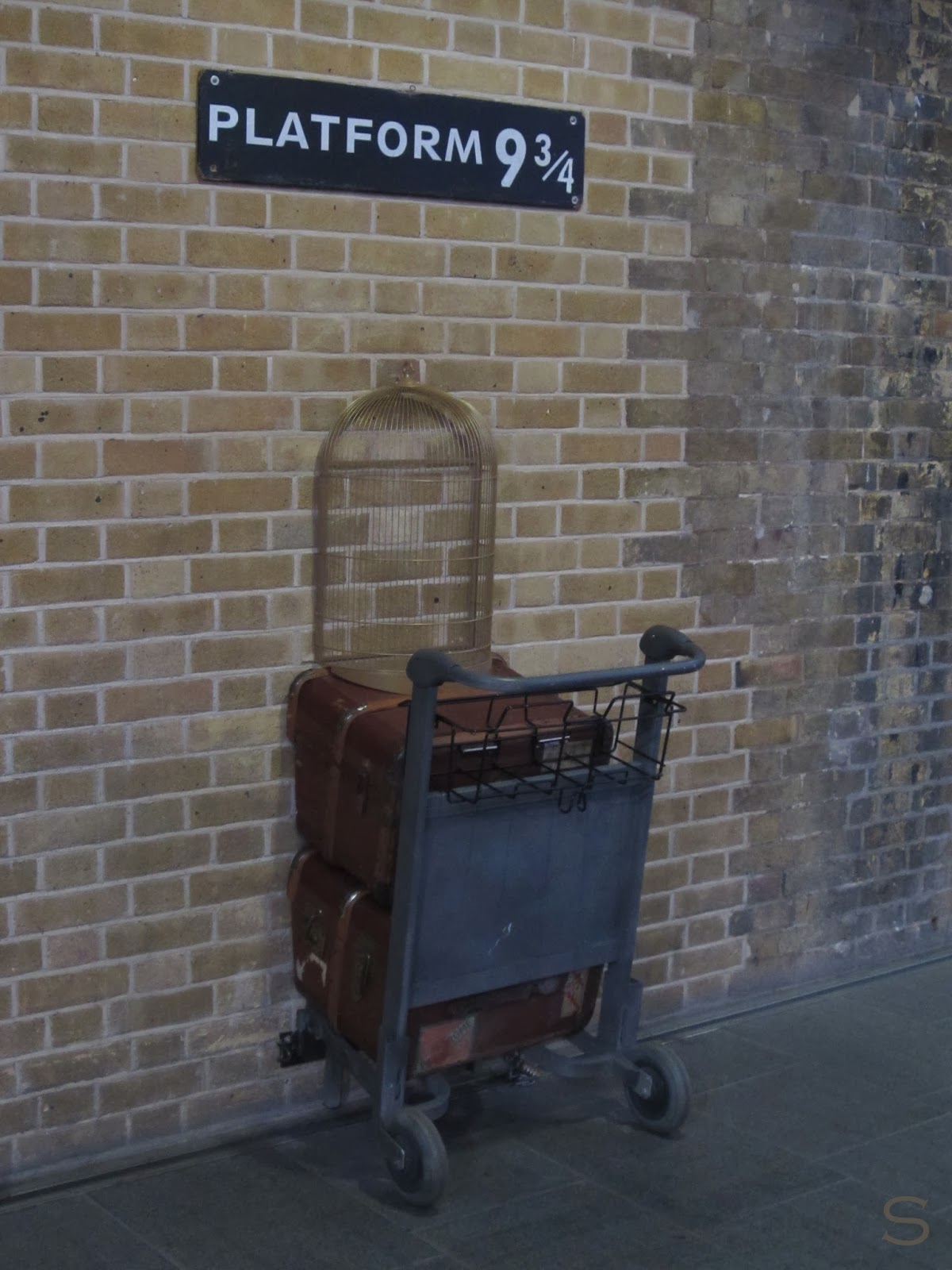 |
| Platform 9 and 3/4, Kings Cross Station |
See that? If not, then you're a muggle! Well, Harry Potter fans get me. That's Platform 9 and 3/4 at Kings Cross Station. Which is only one of the biggest railway stations in London. And not only because the Hogwarts Express departs from here.
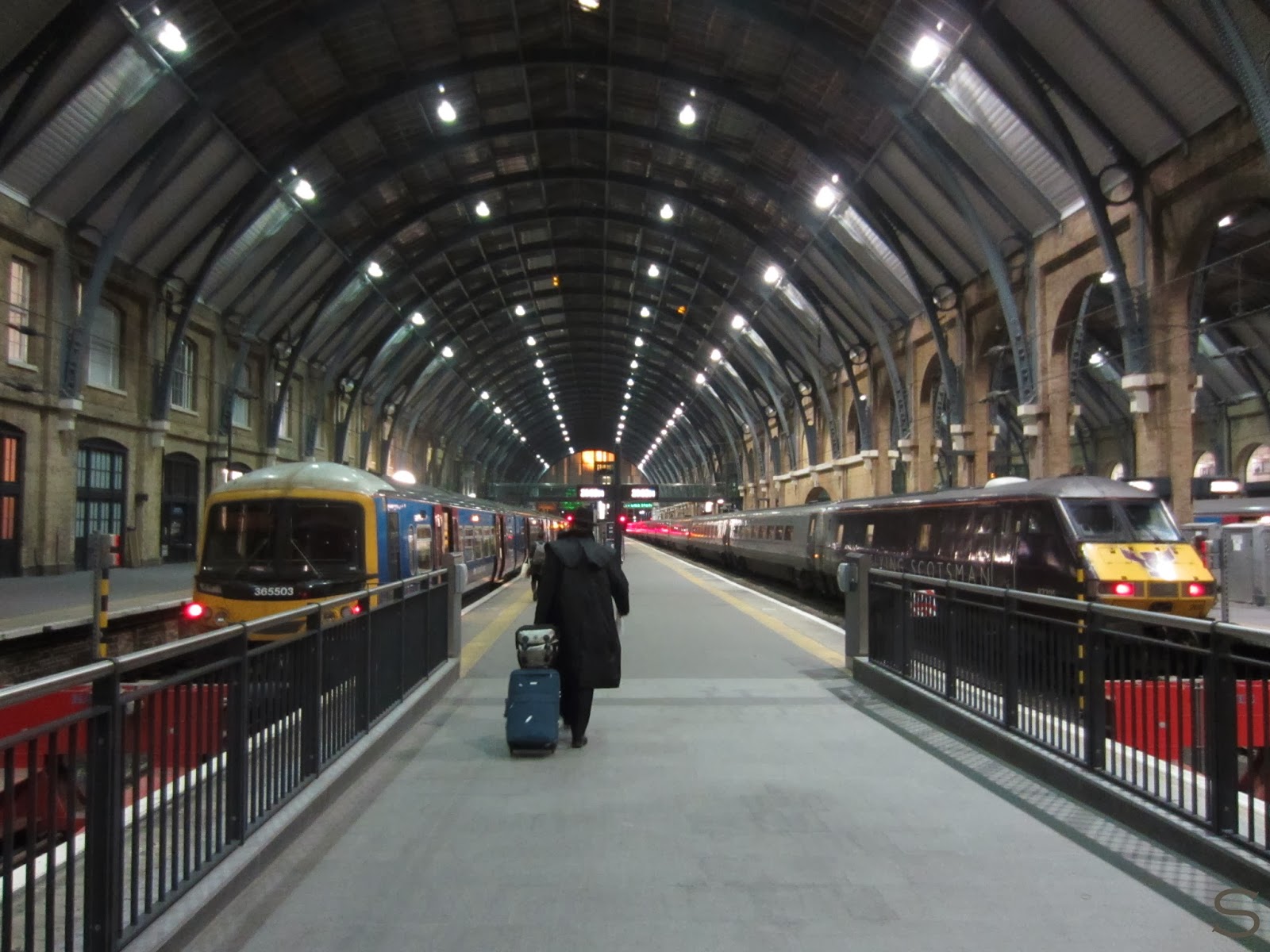 |
| Kings Cross Station |
It serves main line stations such as Leeds, Newcastle and Edinburgh and international connections.
But back to the important stuff. Platform 9 and 3/4 was in the main hall on the way to platform 9 - no need to buy a ticket or get to the actual platforms - but they move it around the station, so they may change its location again. For the record, the real location where the scene at platform 9 and 3/4 was shot is between platforms 4 and 5. Be sure to check it out.
There's also a Harry Potter store, close to the magical platform, which has all kinds of souvenirs, including wands, books and a one-way ticket to Hogwarts.
After the Harry Potter heaven, we headed to Canary Wharf.
 |
| Canary Wharf |
It's located in the West India Docks, which once formed part of the busiest port in the world. Canary Wharf is a major business district - one of the two financial centers - and doesn't look anything like classic-hundreds-years-old London. The whole district is connected underground, so basically people who work there could go by without getting any vitamin D all week. Not that there's much to get in London anyway, given it's hardly ever sunny. But indeed, there's a shopping center on the underground level and a tube station exit.
There's also the DLR (Docklands Light Railway), which operates automatically, without the need of a driver.
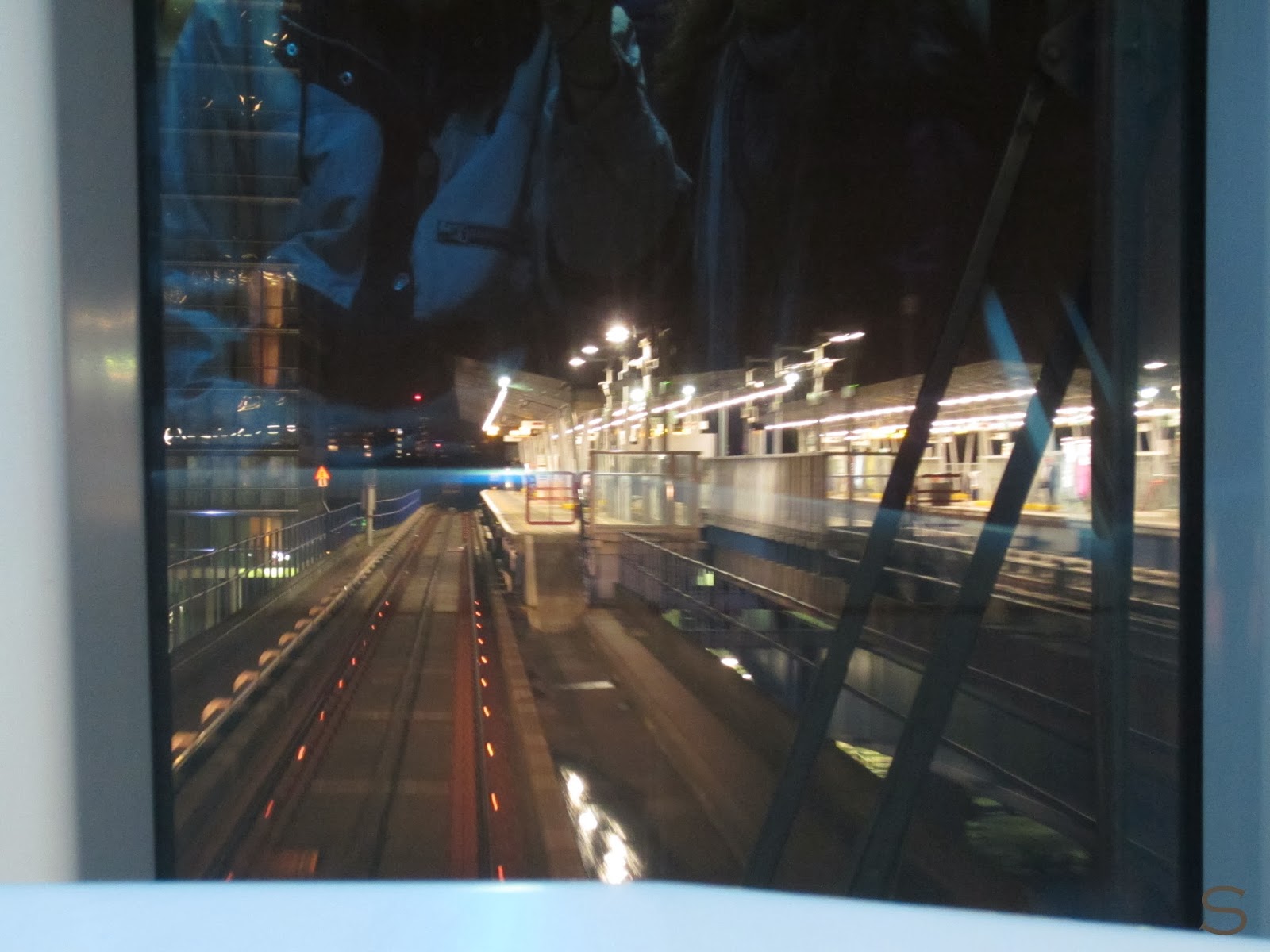 |
| DLR, London |
Pretty cool, huh? We took that to our next stop: Tower Bridge and Tower of London.
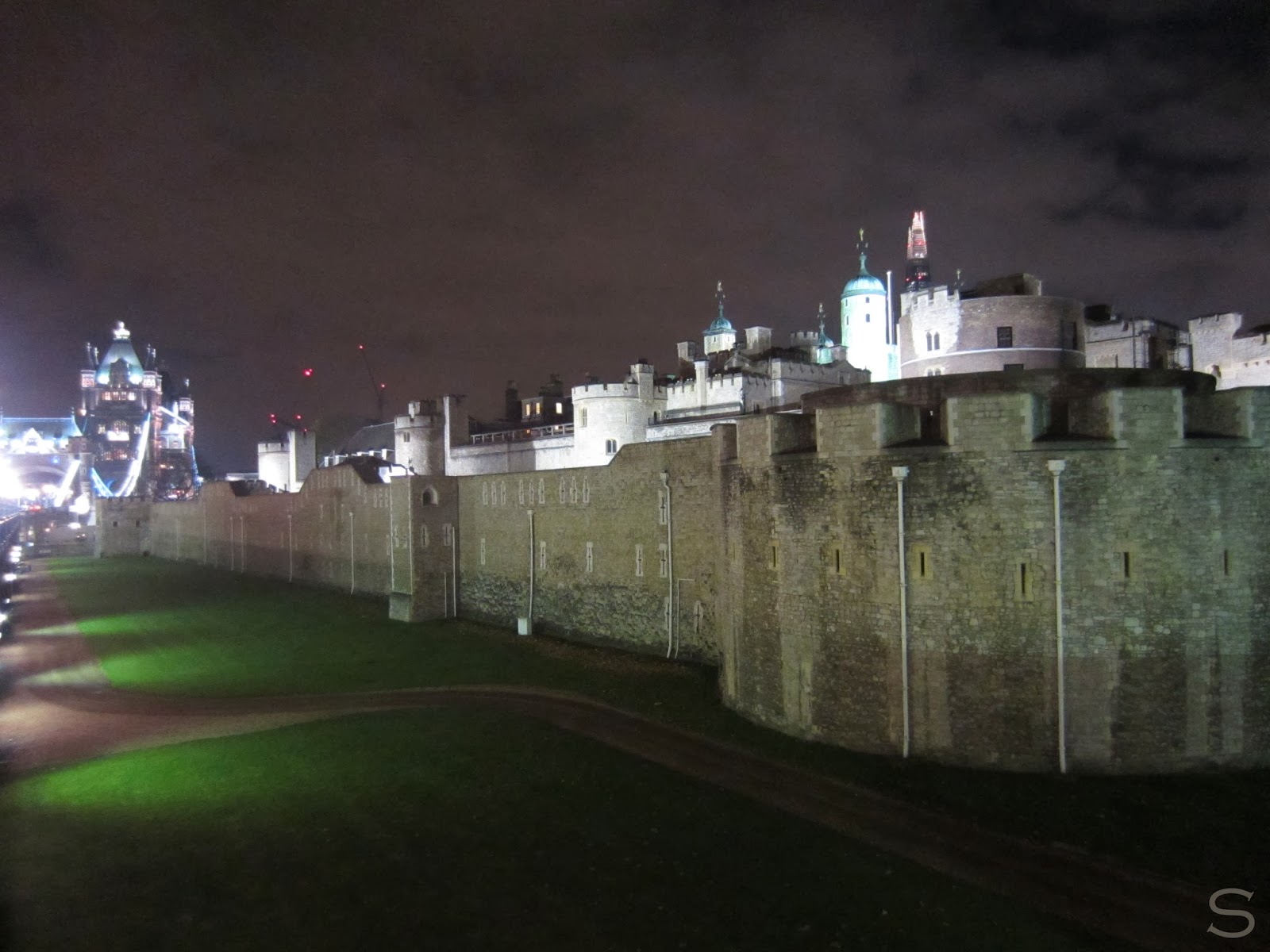 |
| Tower of London |
The Tower of London (Her Majesty's Royal Palace and Fortress) is a historic castle, which has served as an armoury, a treasury, a menagerie, the home of the Royal Mint (the body permitted to manufacture (mint) the coins of the United Kingdom), a public records office, and the home of the Crown Jewels of the United Kingdom - crowns, sceptres, swords and more (which are still kept there). Between 16th and 17th century it even served as a prison.
At 9.52 pm a Ceremony of the Keys is performed there, which is a 700 year old gate-closing ritual. Tickets are required. Check here.
Right next to the Tower of London is Tower Bridge over r. Thames.
 |
| Tower Bridge |
Just as we were about to cross it, they closed it for a boat to pass and we got to witness its lifting.
The view from the bridge is pretty amazing at night.
 |
| The Shard, view from Tower Bridge |
The tall building in the middle is The Shard - an 87-storey skyscraper. It's 306 metres high and is currently the highest building in the European Union. There's an observation deck at the top, which is open to the public.
Down the river bank we passed by the HMS Belfast - a war museum, situated on a ship. The buildings at the background are part of the other financial center - City of London.
 |
| HMS Belfast, a war museum on a ship |
And that's pretty much how the day ended.
The next one we spent mainly wandering around and not so much sightseeing. A few hours went by in the Science Museum.
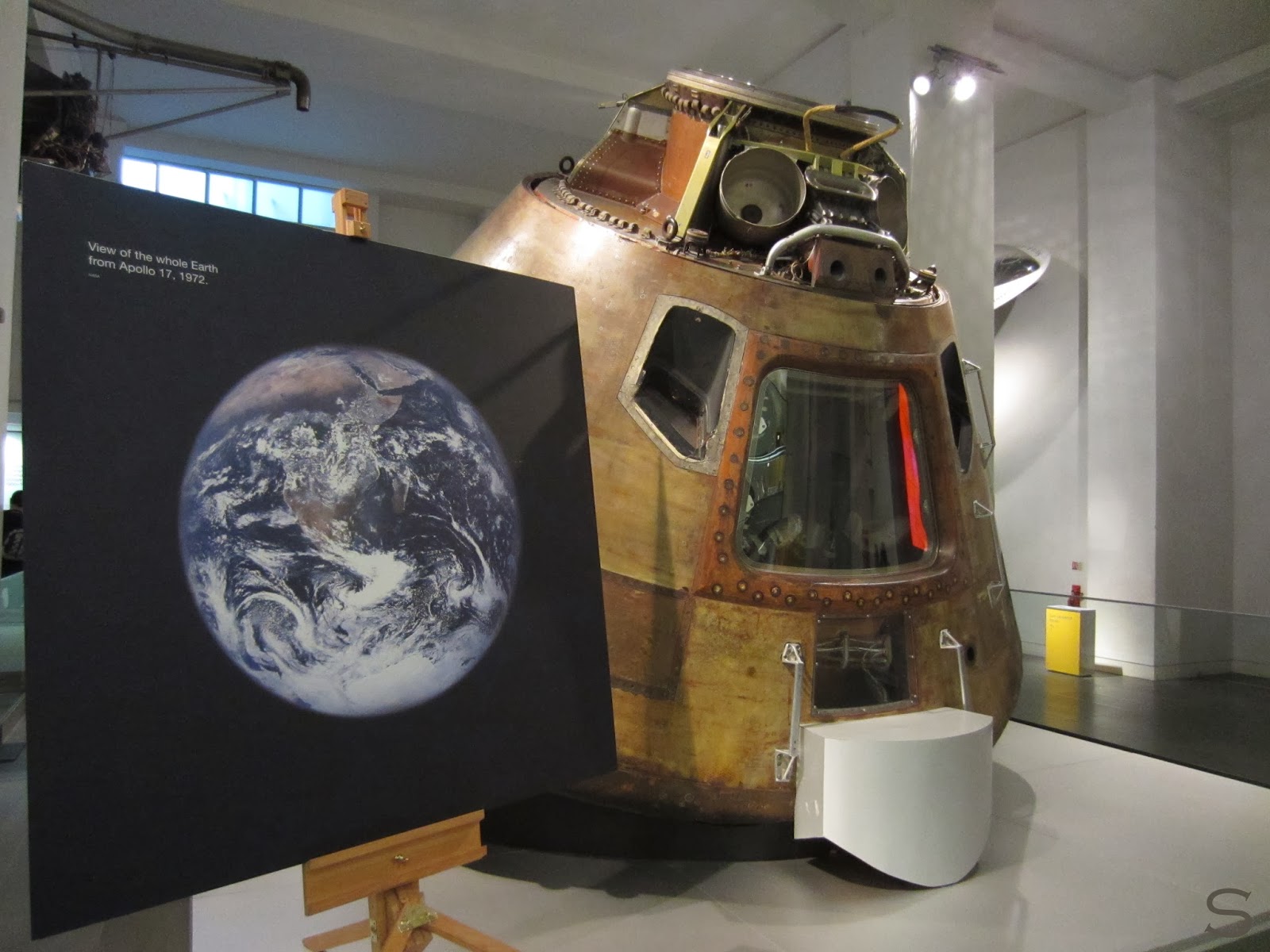 |
| Apollo 10, Science Museum, London |
There were items from steam engines and ancient computers to rockets and planes. There's also an IMAX 3D cinema showing documentaries and a few simulators.
We came across a bigger IMAX cinema:
 |
| IMAX Cinema |
and the National Theatre:
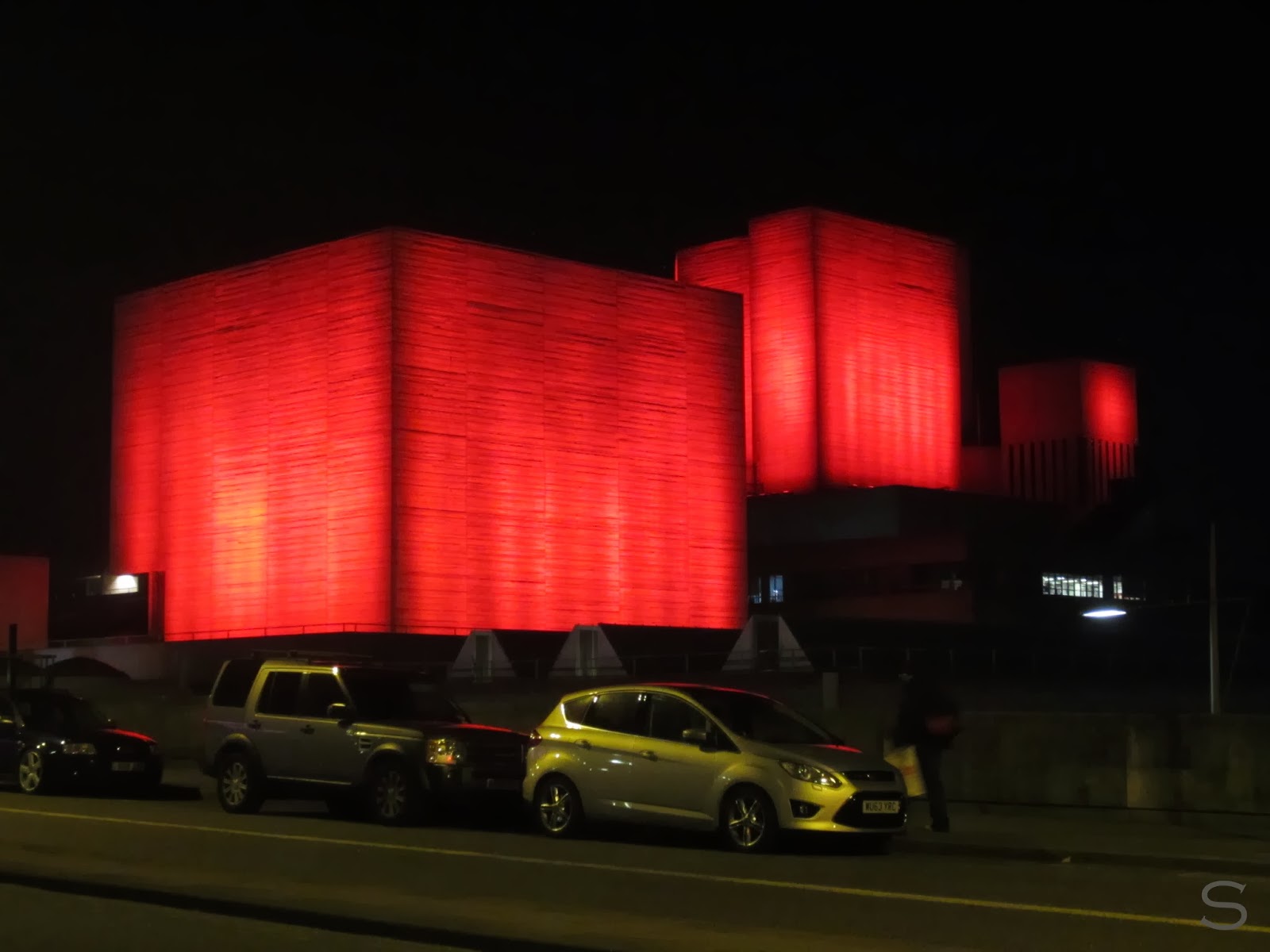 |
| National Theatre |
on our way to Waterloo Bridge. The view on both sides of the bridge is supposed to be beautiful. However, we were going to be late for our flight (which by the way was two hours late) so we only got as far as here:
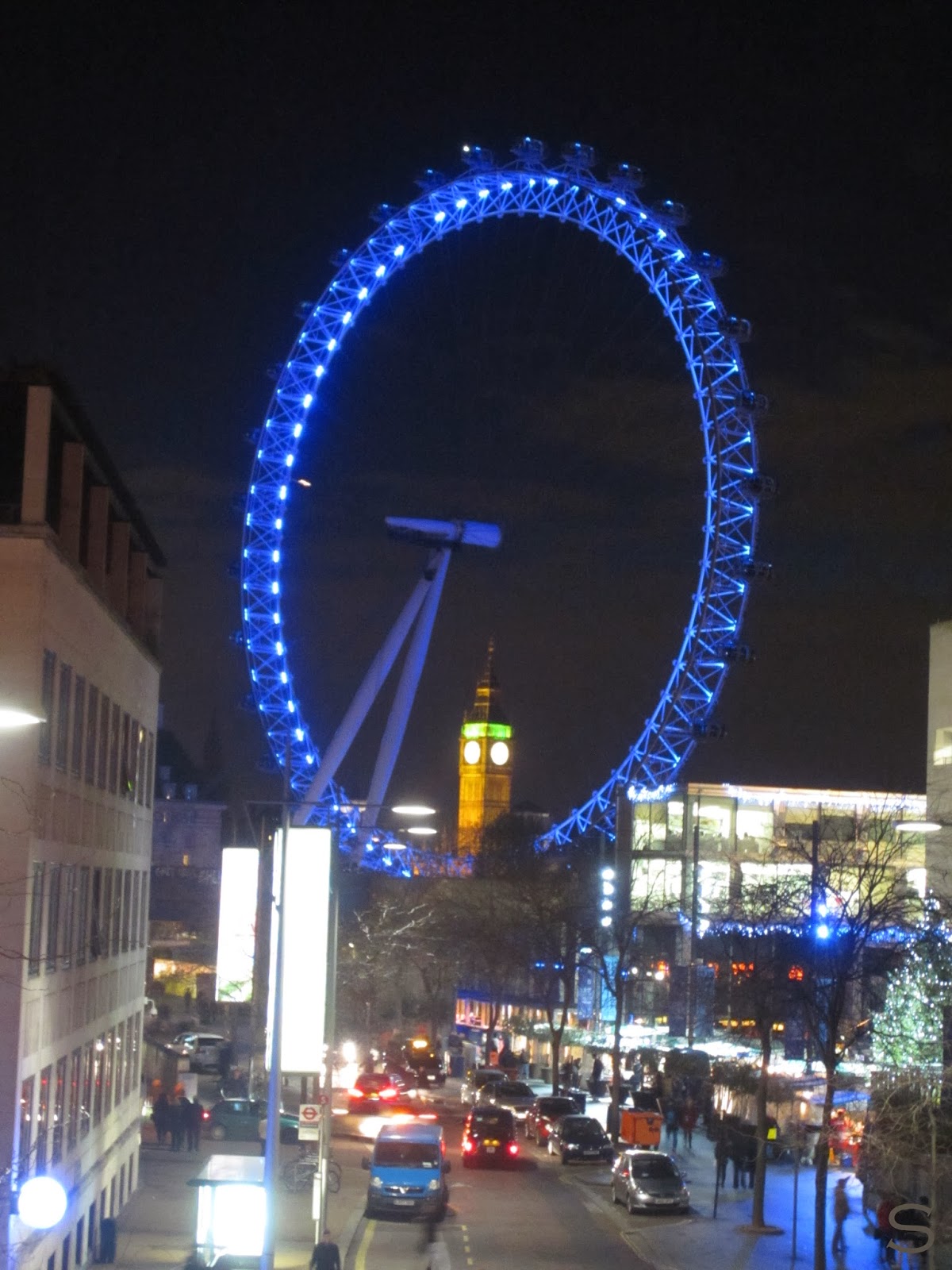 |
| London Eye and Big Ben, view from Waterloo Bridge |
which is like two minutes away from our desired destination. But the view isn't half bad.
We got back to Waterloo Station (is it just me or did we visit quite a lot of these railway stations?)
 |
| Waterloo Station |
and headed back to the airport.
So that's London in a day and a half. In the end, a day and a half is not nearly enough but that's one more reason to go back.